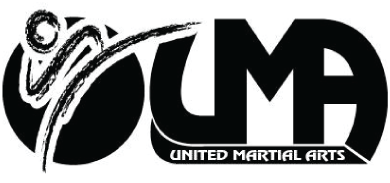Our system of Mixed Martial Arts is a combination of principles stemming from Boxing, Muay Thai, Chinese Quick Wrestling, Brazilian Jiu-jitsu, and Sanshou. In order to be successful in MMA, there are three key components that must be addressed, stand- up, ground fighting, and conditioning. In order to meet the unique demand, our MMA program is geared toward giving our students an advantage by offering realistic drills and simulating common situations during a MMA competition.
Boxing is the sport of fighting with the fists but is limited to legal blows to those striking above the waist and on the front or sides of the opponent. The efficiency of strikes in boxing makes an individual with this background a very devastating opponent. By using boxing skills, and individuals accuracy and power are increased exponentially. This trait is extremely useful in the dynamic sport of MMA.
Muay Thai is a hardstyle combat system that hails from Thailand. This unique style incorporates the use of knees and elbows that are often thrown from the clinch. The clinch is a short range position where the combatants battle for position much like in wrestling. This fighting system is world renowned. Head Coach Ian Lee holds a Class C Coaching Certification from Chinese Taipei of the World Muay Thai Federation as of March 26th 2010. He is the only officially certified instructor in West Texas.
Sanshou is a Chinese hand-to-hand self-defense system and combat sport. Not seen as a style itself, it is considered as just one of the two components of Chinese martial arts training. It is often taught alongside with taolu (forms) training. Sanda was developed as part of sport wushu by the Chinese government. This curriculum was developed by experimenting with the Chinese military experiences in close range and hand to hand combat with reference to traditional Chinese martial arts. The Chinese government developed a version for civilians in the form of self-defense and sport. Sanda has evolved into a sport of striking, throwing, and quick wrestling.
Chinese Quick Wresting is the perfect transition from the stand up game down to the ground. The reason for this is the skills taught are from a dynamic position because western wrestlers are not taught how to takedown an opponent while being struck at. Chinese Quick Wrestling movements are often counters to being struck. By teaching skills in this more dynamic setting, the learning curve as fighters transition into MMA increases drastically.
Brazilian Jiu-Jitsu emphasizes taking an opponent to the ground and utilizing ground fighting techniques and submission holds involving joint-locks and chokeholds also found in numerous other arts with or without ground fighting emphasis. The premise is that most of the advantage of a larger, stronger opponent comes from superior reach and more powerful strikes, both of which are somewhat negated when grappling on the ground. The skills learned in no-gi Jiu-Jitsu can give an individual with this background an opportunity to submit their opponent in an MMA fight.
A key component often overlooked by most fighters is conditioning. A highly trained individual may have all the skills in their repertoire, but if they are not in condition to use them, they will lose in a MMA fight. At UMA we have the top facility for weight and circuit training. We have a team of coaches from all over Texas that meet frequently to find better ways to condition their athletes for MMA competition. We have incorporated a sport specific Strength and Conditioning program in order to meet the needs of our fighters.
